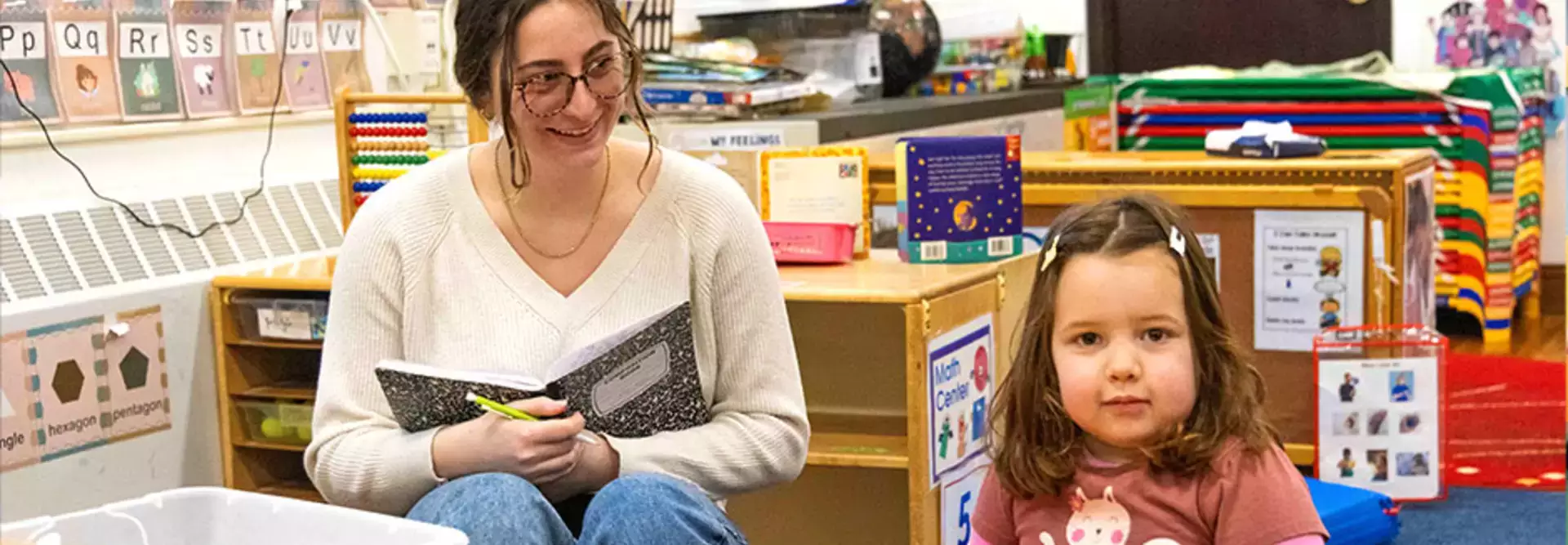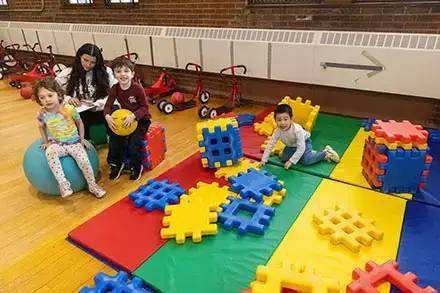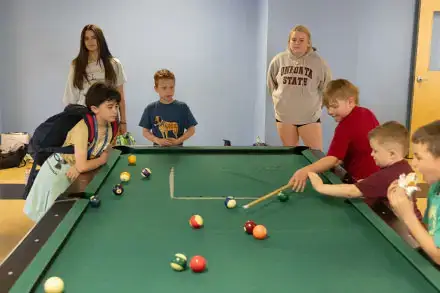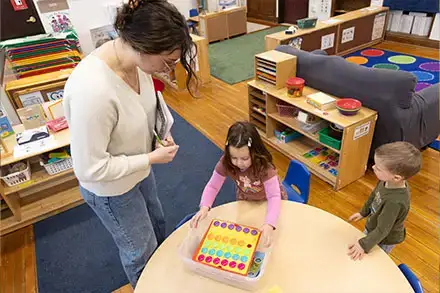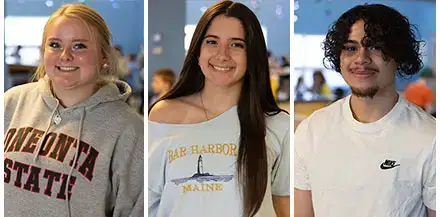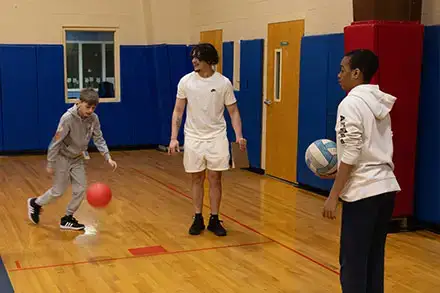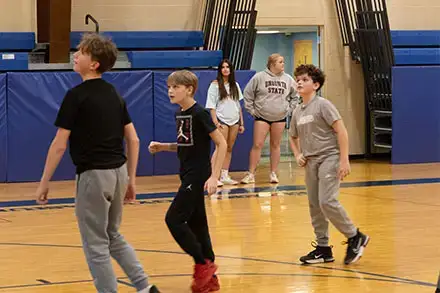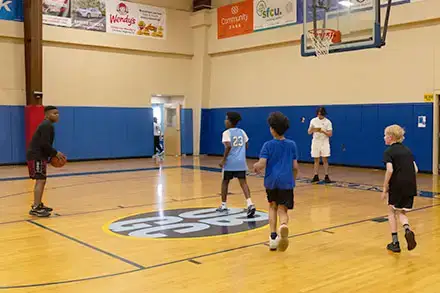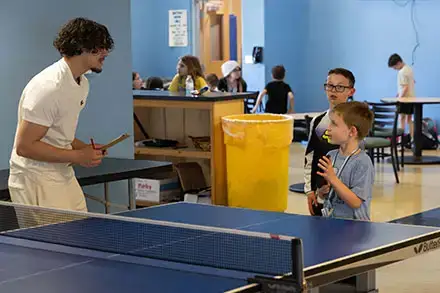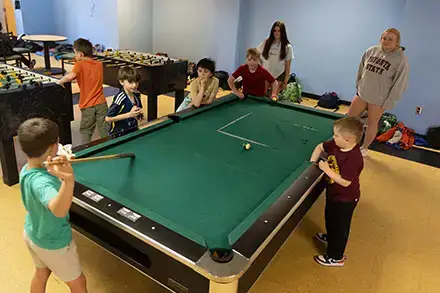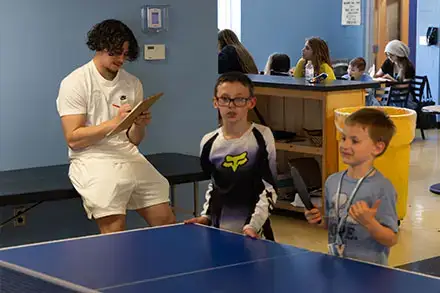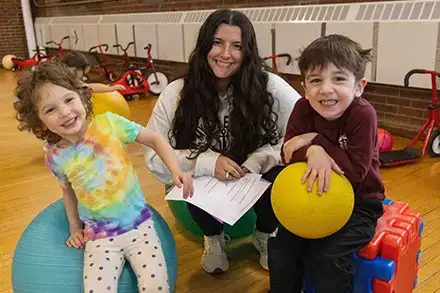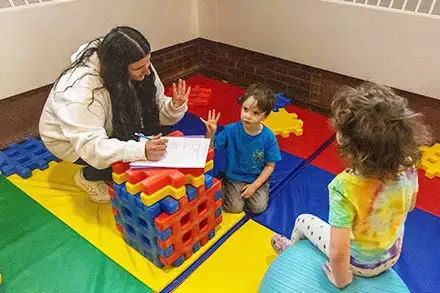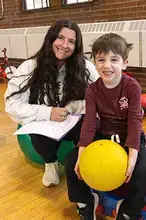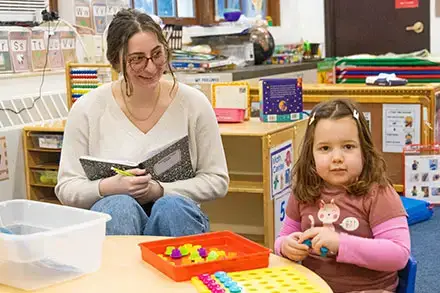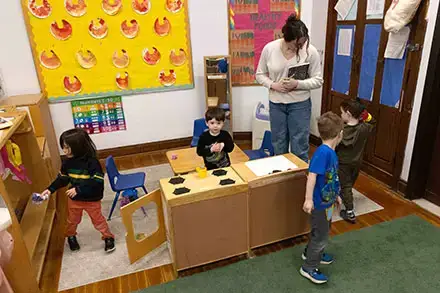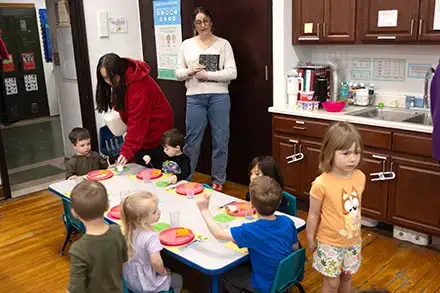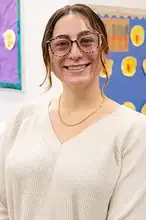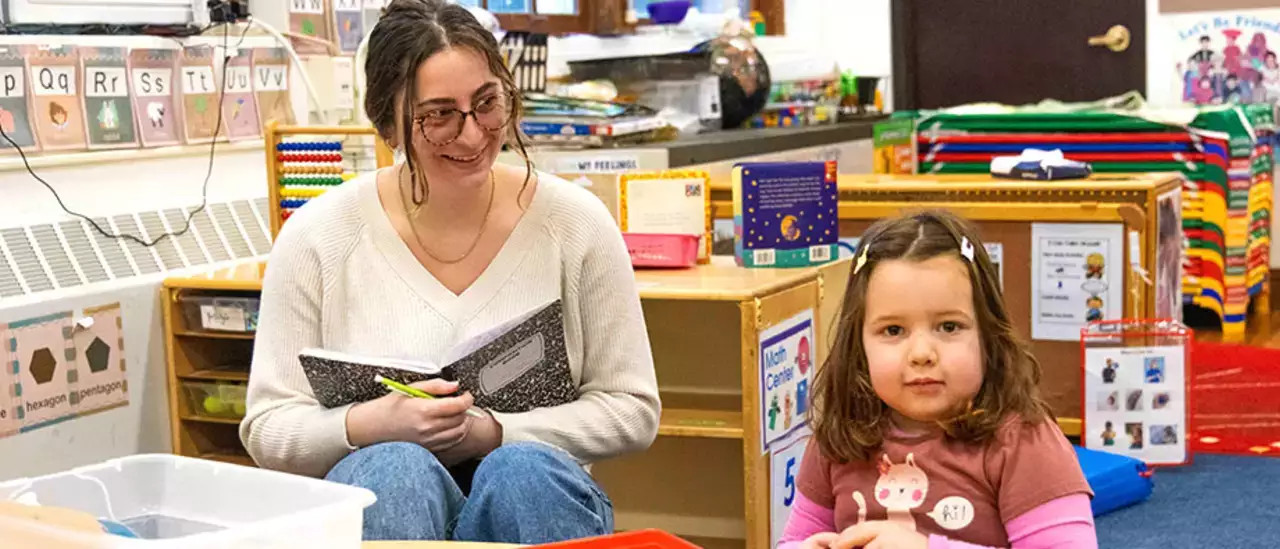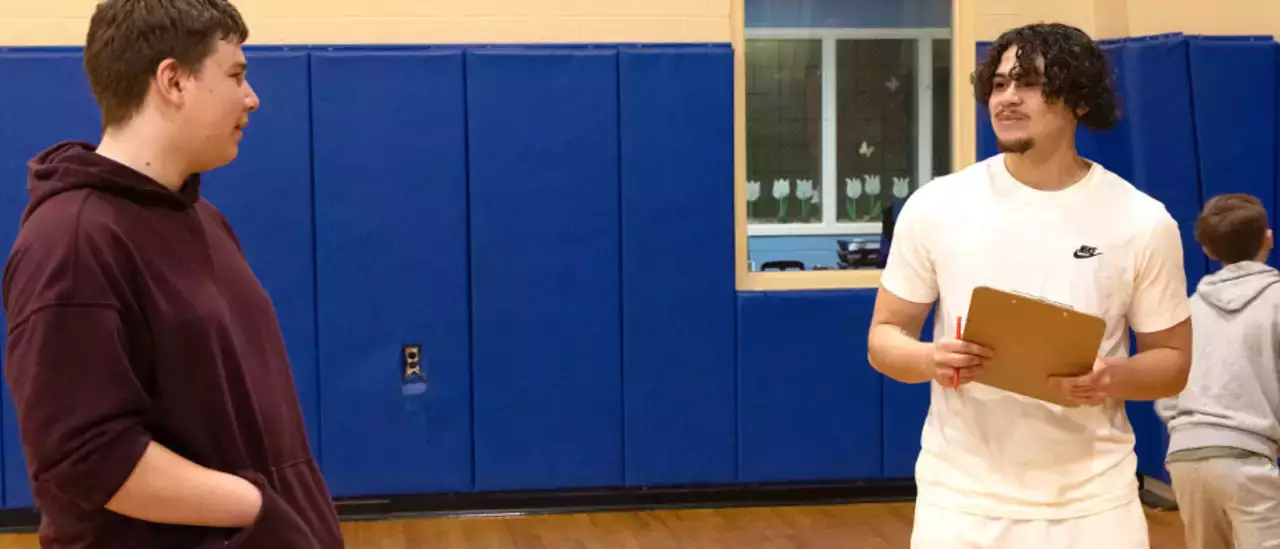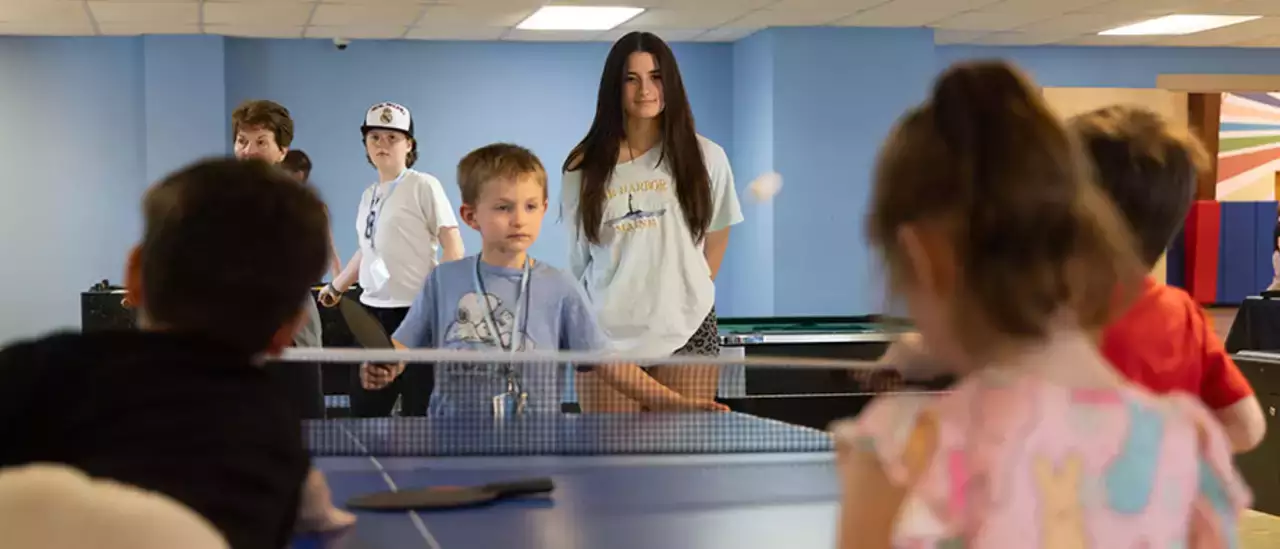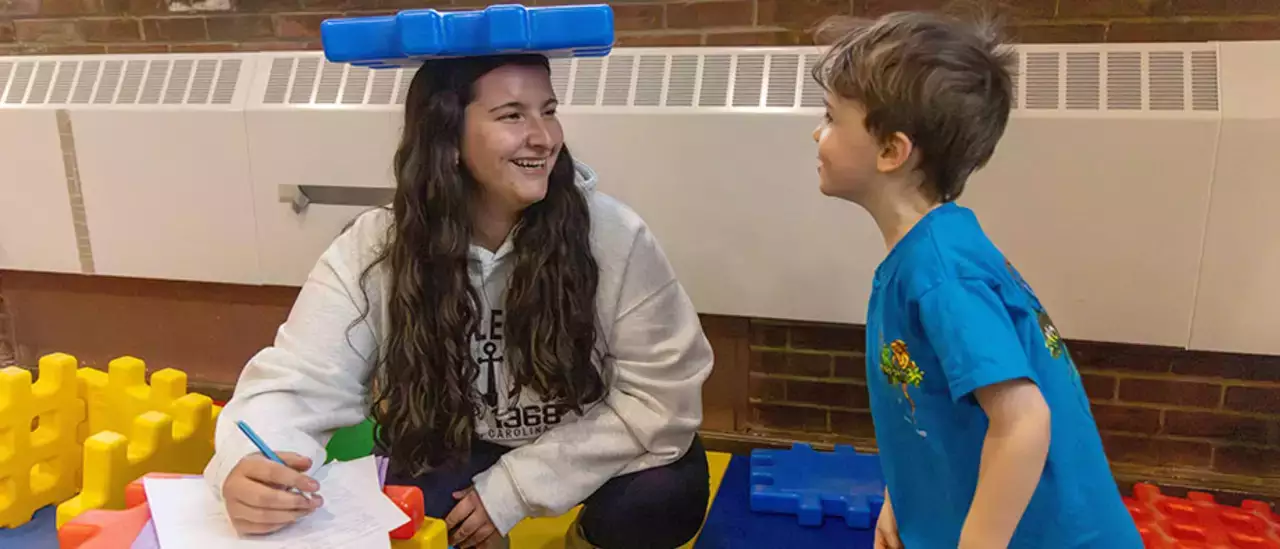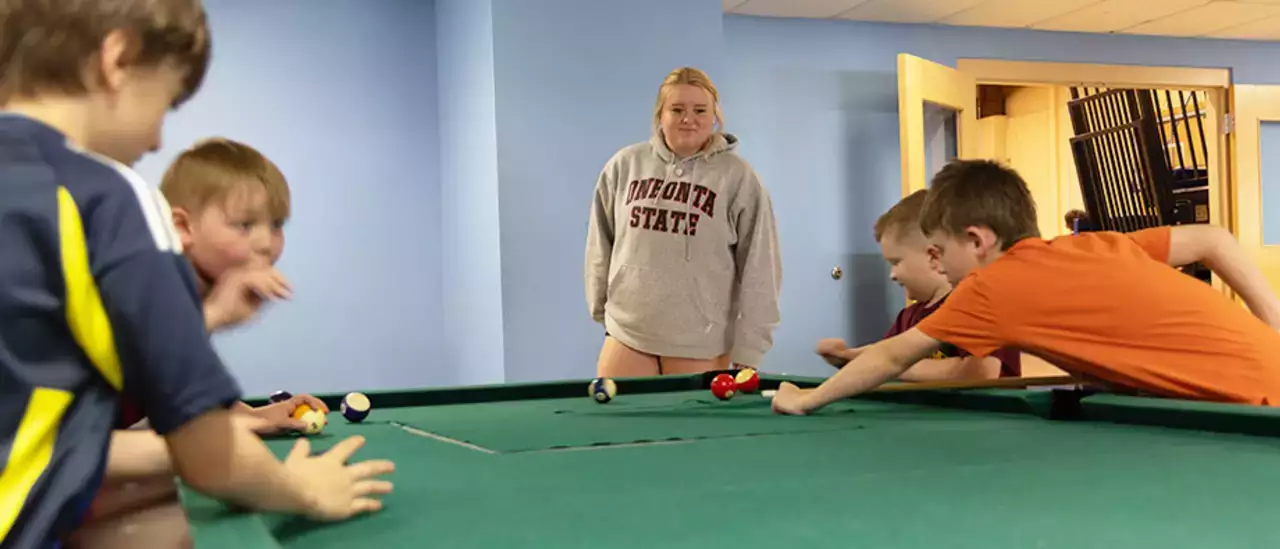Forty-three SUNY Oneonta students traded the classroom for real-world, firsthand experience in motor development through a new program called Developing Red Dragons.
During the spring 2025 semester, SUNY Oneonta Exercise Science students gained hands-on experience working with children ages 3-16 as part of a new initiative in their Human Growth and Motor Development course, which builds on the success of the Little Red Dragons program launched in fall 2022.
The course focuses on the developmental changes people undergo throughout life. Students explore factors that impact motor development, stages of movement and why individuals grow and develop differently. Developing Red Dragons serves as a precursor to Little Red Dragons, allowing students to observe children in real-world environments before designing their own sports and exercise workshops later in the curriculum.
“It’s one thing for me to describe how someone with small hands may struggle to use a normal-sized fork, but to see it with their own eyes sinks in the content,” said Assistant Professor of Sport and Exercise Science Katherine Griffes. “One student told me now that anytime he sees his nephew or nieces, he can’t help but notice the class concepts because he is used to looking for them. That’s a huge win in my book, that students are more aware of the developmental aspects of life that are happening right under our noses all of the time.”
Working with Community Partners
Students spent several hours each week at the Bugbee Children’s Center, the Oneonta YMCA and the Oneonta Boys and Girls Club (OBGC), observing and interacting with children in classroom and play settings.
During a warm Wednesday afternoon in April at the OBGC, students Sophia de Jong, Gianna Forte and Christian Bravo observed and engaged with children ages 6 to 16 in both the gym and game room. In the gym, music played as kids took part in energetic games of two-on-two and three-on-three basketball. The students took notes from the sidelines and sometimes stepped in to demonstrate balance, body control and proper shooting form.
For classmate Jack Viator, the hands-on work at OBGC earlier that month revealed just how much of a difference a short interaction can make. “It is incredible how much influence you can have on kids in such little time,” said Viator. No matter the age difference, it is inspiring to see how passionate and energetic these kids are about physical activities.”
Beyond basketball, kids kicked soccer balls, passed to one another and developed coordination, decision-making and teamwork. The students rotated between hands-on instruction and passive observation to capture both individual progress and group dynamics.
“Partnering with SUNY Oneonta opens new doors and opportunities to better serve our kids,” said OBGC Executive Director Bob Escher. “It’s very exciting stuff!”
A Mutually Beneficial Learning Experience
At the Bugbee Children’s Center, students Ella Sawitzki and Amelia Cataldo worked with children ages 3 to 6 in the classroom and gym.
In the gym—an old space with brick walls, colorful mats and foam block structures—Sawitzki joined the kids on their level, sitting on a green medicine ball. Children laughed, knocked over blocks, rode tricycles and bounced basketballs while engaging with her. She asked memory-based questions and took notes, complimenting and encouraging the kids while observing how they responded.
“What I am looking for in my observation is how these kids function on a day-to-day basis. I’m looking to see what types of activities they do, how they interact with others, and to see how developed they are for their age,” said Sawitzki. “I love being able to interact with kids and see how different their experiences are compared to ours. Not one kid is the same as another and everyone has their own unique pace of learning.”
In the classroom, Cataldo sat with children as they played games like Connect Four or climbed over teal and pink play structures. Surrounded by colorful carpets, desks and toys, she talked with the kids, encouraged them and used routine tasks, such as preparing for breakfast, to support learning.
“I found that during my observations, kids are so open to showing you new skills and showing you what they're doing and explaining the way through,” said Cataldo. “You ask a question and they're so open to answer it, which can help you get a very clear grasp on not only their motor development, but also some of their cognitive development. ‘Can you show me how you balance?’ and they'll just go and show you how they balance. They're so happy to have someone there and it's such a welcoming time.”
As Developing Red Dragons continues to grow, students aren’t just learning about child development, they’re experiencing it. The program not only builds knowledge, it strengthens community connections that benefit both students and the children they support.
“We have very much enjoyed working with Dr. Griffes and her Exercise Science students over the past year. Three- to five-year-old children are a fun, highly energetic and sometimes challenging group of children,” said Bugbee Children’s Center Director Becky Miller. “This collaboration is not only a great experience for the SUNY students but also for our preschoolers and staff. We are learning from each other with every interaction. We hope to continue to work with the students and add to our collaborations with other departments.”
